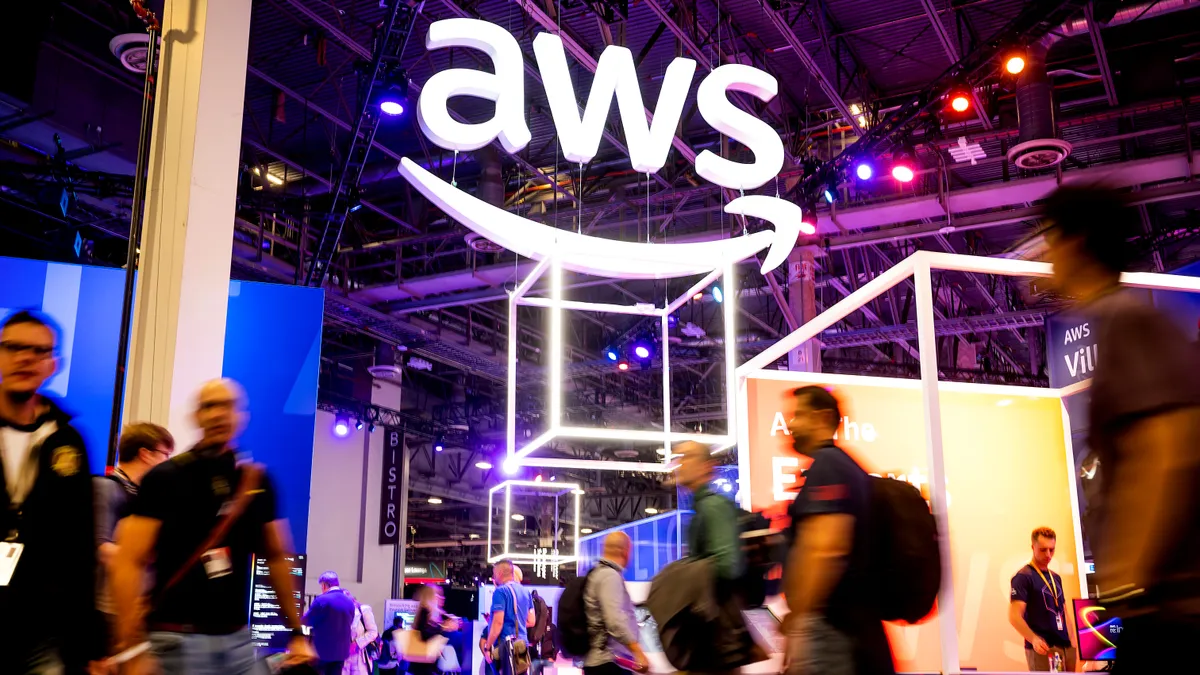Dive Brief:
- AWS held on to global cloud dominance in Q3, despite a yearlong optimization trend that cut its revenue growth rate by more than half. Cloud revenue increased 12% year over year, to $23.1 billion in Q3 2023, Amazon reported Thursday. The hyperscaler saw net sales jump 27% during the same three-month period last year.
- Amazon’s massive cloud segment, which accounted for 16% of the company’s $143.1 billion in total quarterly revenue, commanded one-third of global cloud spending in Q3, according to Synergy Research Group market analysis. Global spending on cloud infrastructure services ballooned to $68 billion for the quarter, an 18% year-over-year increase.
- “While we still saw elevated cost optimization relative to a year ago, it's continued to attenuate as more companies transition to deploying net new workloads,” Amazon CEO Andy Jassy said during a Thursday earnings call. “Companies have moved more slowly in an uncertain economy in 2023 to complete deals, but we're seeing the pace and volume of closed deals pick up.”
Dive Insight:
Large revenue gains translate to incrementally smaller slices of the total as markets mature and the overall size of the pie grows. But generative AI may rewrite the equation, as customers turn to hyperscaler marketplaces to access the technology.
“As an already massive cloud market keeps on growing, the year-on-year growth rate almost inevitably declines,” SRG Chief Analyst John Dinsdale said in an email. “But we are now starting to see a stabilization of growth rates, as cloud provider investments in generative AI technology help to further boost enterprise spending on cloud services.”
AWS racked up $1 billion more in revenue during Q3 than in the previous quarter, and $2.6 billion more than a year ago, as the company rolled out its Bedrock generative AI marketplace and enterprises initiated pilot programs in search of scalable use cases.
“We have been surprised at the pace of growth in generative AI,” Amazon CFO Brian Olsavsky said Thursday. “By any measure, it's a pretty significant business for us already.”
The company has a three-tiered approach to generative AI implementation and is investing across three distinct macro layers, Jassy said.
“At the lowest layer is the compute to train large language models, or LLMs, and produce inferences or predictions,” Jassy said.
The Bedrock marketplace is the middle layer, where customers can tune and customize various LLMs, including Amazon’s Titan and models built by Anthropic, Stability AI, Cohere and AI21. Applications like Amazon CodeWhisperer coding assistant sit at the top layer of a growing generative AI ecosystem.
The aim is to ease access to emerging capabilities.
“Customers want to bring the models to their data, not the other way around,” Jassy said.
A lot of the data AI systems need resides in AWS data centers. While optimization has taken a toll on year-over-year revenue growth, it’s barely made a dent in global market share.
AWS’ closest competitor, Microsoft, has 23% of the market, the SRG report said, and Google Cloud sits at 11%, giving the big three cloud providers control of two-thirds of global cloud spend.















